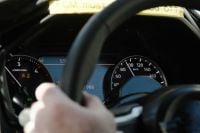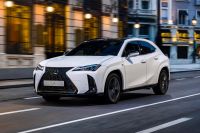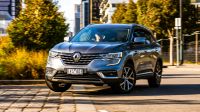Hyundai Ioniq 5 EV, Toyota Mirai hydrogen car join WA police
The WA police force has taken a Hyundai Ioniq 5 EV and Toyota Mirai hydrogen car on board, as part of a trial and promotional exercise.

Contributor
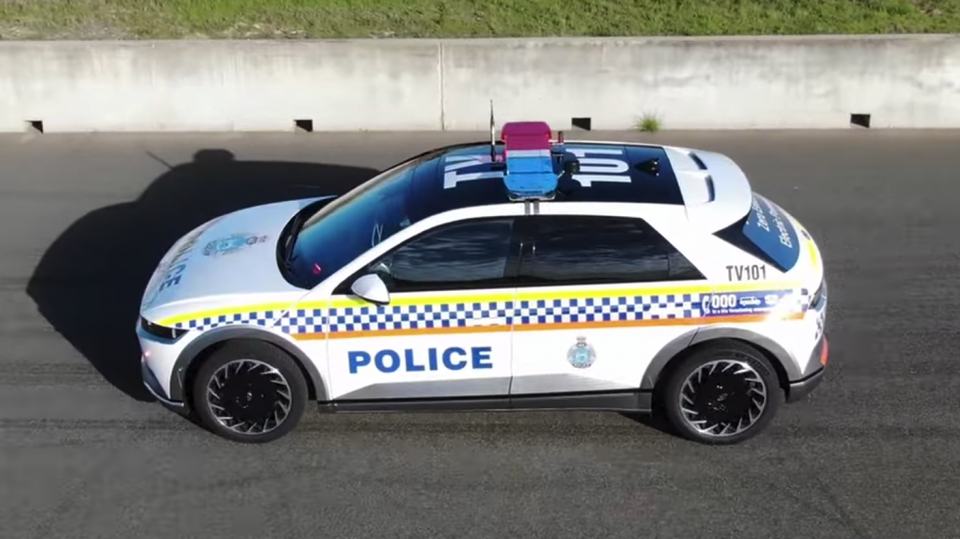

Contributor
The Western Australian police force is trialling two zero-emission vehicles: the Hyundai Ioniq 5 electric crossover, and Toyota Mirai hydrogen-fuel cell sedan.
This trial – and publicity exercise – is intended to showcase whether these electrified vehicles have potential for frontline policing applications in the future.
Both the Hyundai Ioniq 5 and Toyota Mirai have been decked out with WA Police Force branding, police radios, lights and sirens.
The Ioniq 5 police car will be trialled in areas such as Midland, Rockingham, Geraldton and Bunbury, while the Toyota Mirai will be used in the Fremantle District.
WA assistant police commissioner Allan Adams said the acquisition of these electrified vehicles formed part of the Western Australia Climate Policy, which outlines proposed government actions to transition to net-zero emissions.
The supply-restricted Hyundai Ioniq 5 first arrived here in late 2021 and is currently sold in single- and dual-motor configurations.
Both use a 72.6kWh lithium-ion battery pack, with the single-motor rear-wheel drive offering 160kW of power and 350Nm of torque, and the dual-motor AWD 225kW and 605Nm.
The rear-wheel drive variant can do the 0-100km/h sprint in 7.4 seconds, whereas the all-wheel drive model does the sprint in 5.2 seconds. The driving ranges sit between 415km and 430km.
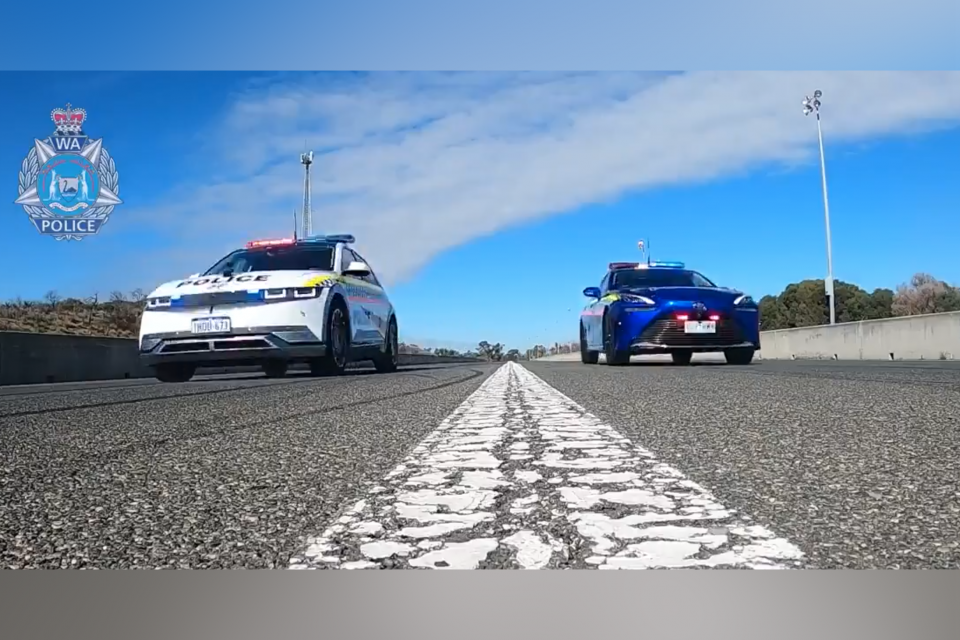
As previously detailed, Hyundai Australia is selling the Ioniq 5 direct to consumers, bypassing the step of wholesaling them into its franchise dealer network, due to tight supply.
The Toyota Mirai on the other hand is currently only available for fleets and not for consumer purchasing at all.
While the Hyundai, like all BEVs, runs on rechargeable batteries, the Mirai uses the much less common hydrogen fuel-cell approach, feted for heavy duty commercial applications in particular.
It uses pressurised hydrogen (which can be made with renewable energy via electrolysis), and harness energy from a chemical reaction when it’s mixed with oxygen from the air. This spins the motors, with water (H2O) the sole waste product.
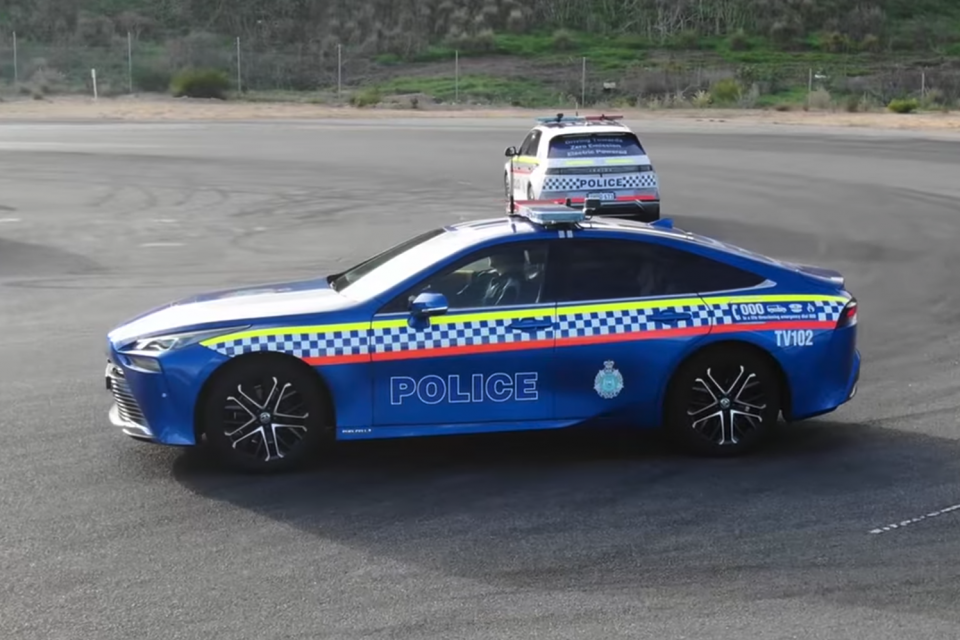
The Toyota FCEV can hold up to 5.6kg of pressurised hydrogen in its three tanks and be filled up in five minutes, according to Toyota – quicker than charging an EV – and cover about 650km per fill.
Power is handled by a single rear-mounted electric motor producing approximately 134kW and 300Nm. The claimed 0-100km/h dash time is 9.2 seconds and the top speed is 175km/h.
The Mirai also has a 1.2kWh lithium-ion battery for storing energy produced by the fuel cell and regenerative braking. Where FCEVs fall down is the current lack of hydrogen refuelling infrastructure.
Both the Hyundai Ioniq 5 and Toyota Mirai have earned five-star ANCAP safety ratings.
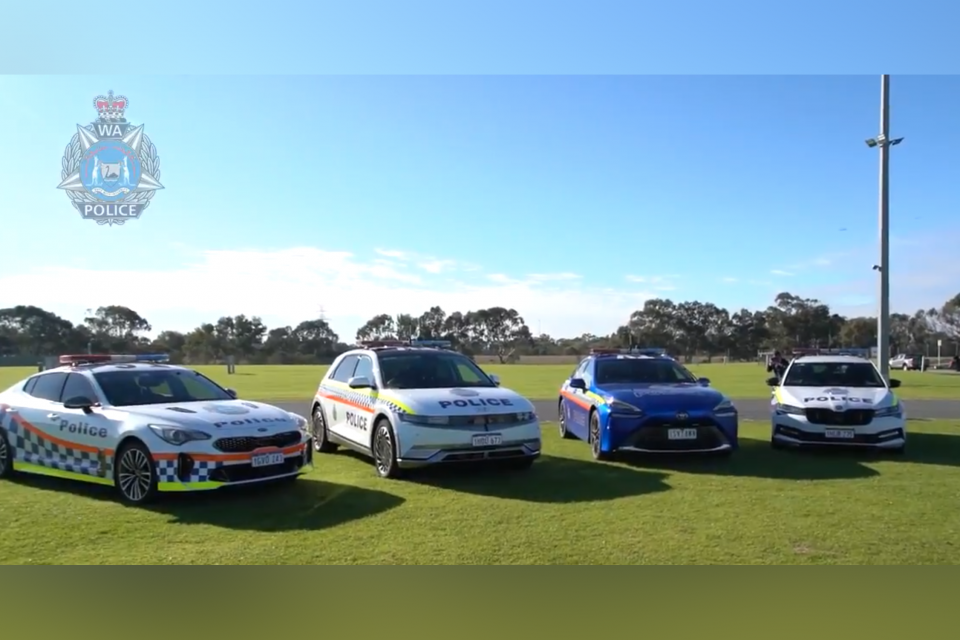
WA police minister, the Hon. Paul Papalia, called the news “a first for the nation”, adding that the force has one of the biggest vehicle fleets within the state government.
Despite his claim, the New South Wales Police has previously had a Hyundai Kona Electric join the fleet as part of a 12 month trial, and the Queensland Police had a Hyundai Nexo FCEV also as part of a trial.
Most recently, the WA Police ordered 55 Skoda Superb wagons to help its vast highway network.
The suitability of the Hyundai Ioniq 5 and Toyota Mirai as future police vehicles will be evaluated at the end of the trial.
MORE: Everything Hyundai Ioniq 5 MORE: Everything Toyota Mirai
Jack Quick is an automotive journalist based in Melbourne. Jack studied journalism and photography at Deakin University in Burwood, and previously represented the university in dance nationally. In his spare time, he loves to pump Charli XCX and play a bit of Grand Theft Auto. He’s also the proud owner of a blue, manual 2020 Suzuki Jimny.
You might also like


Ben Zachariah
CarExpert's top five ute reviews of 2025
34 Minutes Ago


Derek Fung
Lexus RZ600e: New flagship boasts more power, plenty of wings
1 Hour Ago


Matt Campbell
2026 MG U9 review
8 Hours Ago


William Stopford
The cars revealed in 2025 we wish would come to Australia
24 Hours Ago


Josh Nevett
CarExpert's top five large SUV reviews of 2025
1 Day Ago


Ben Zachariah
Video: Off-road battle for Beer O’Clock Hill has automakers scrambling
2 Days Ago

